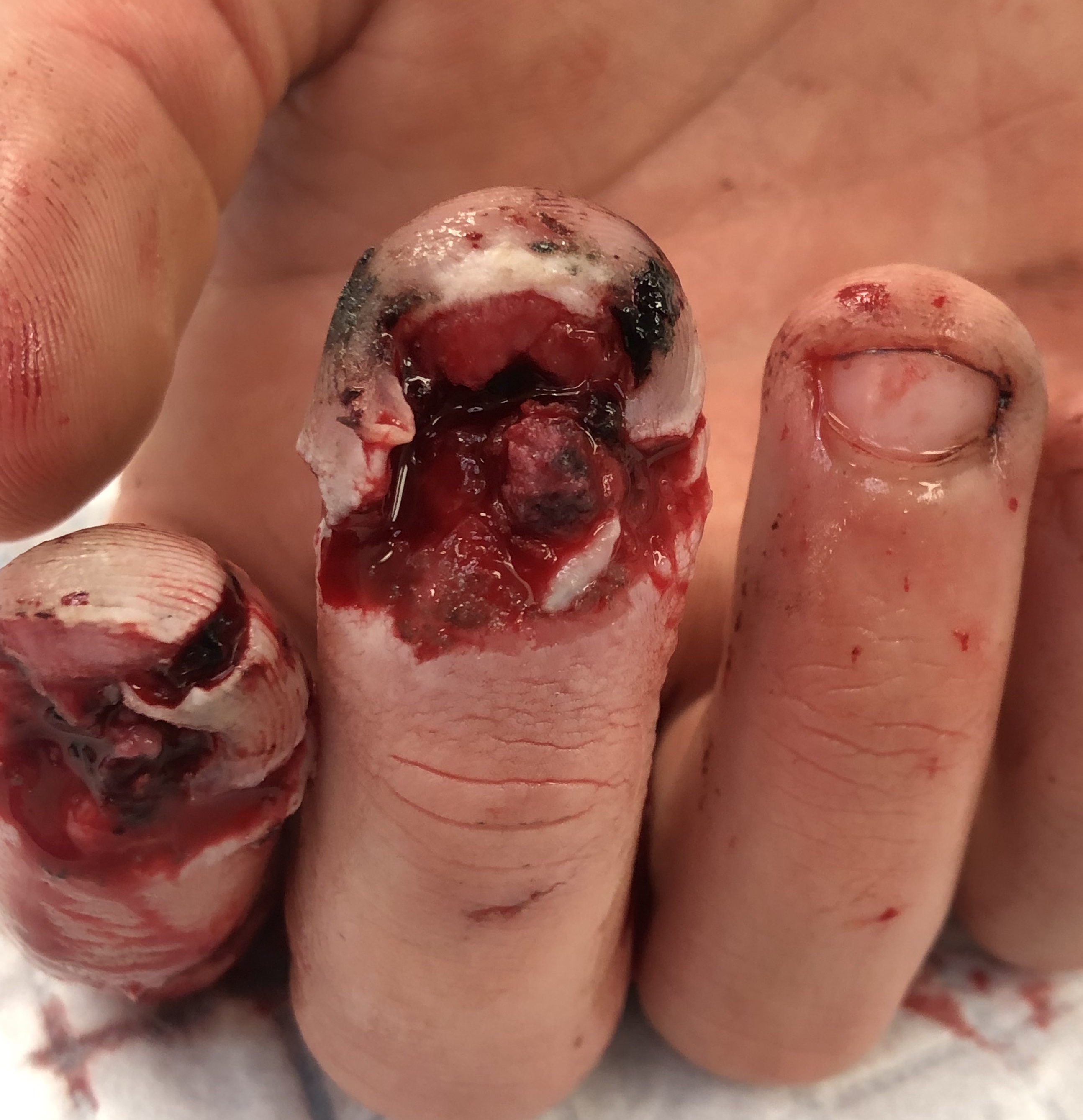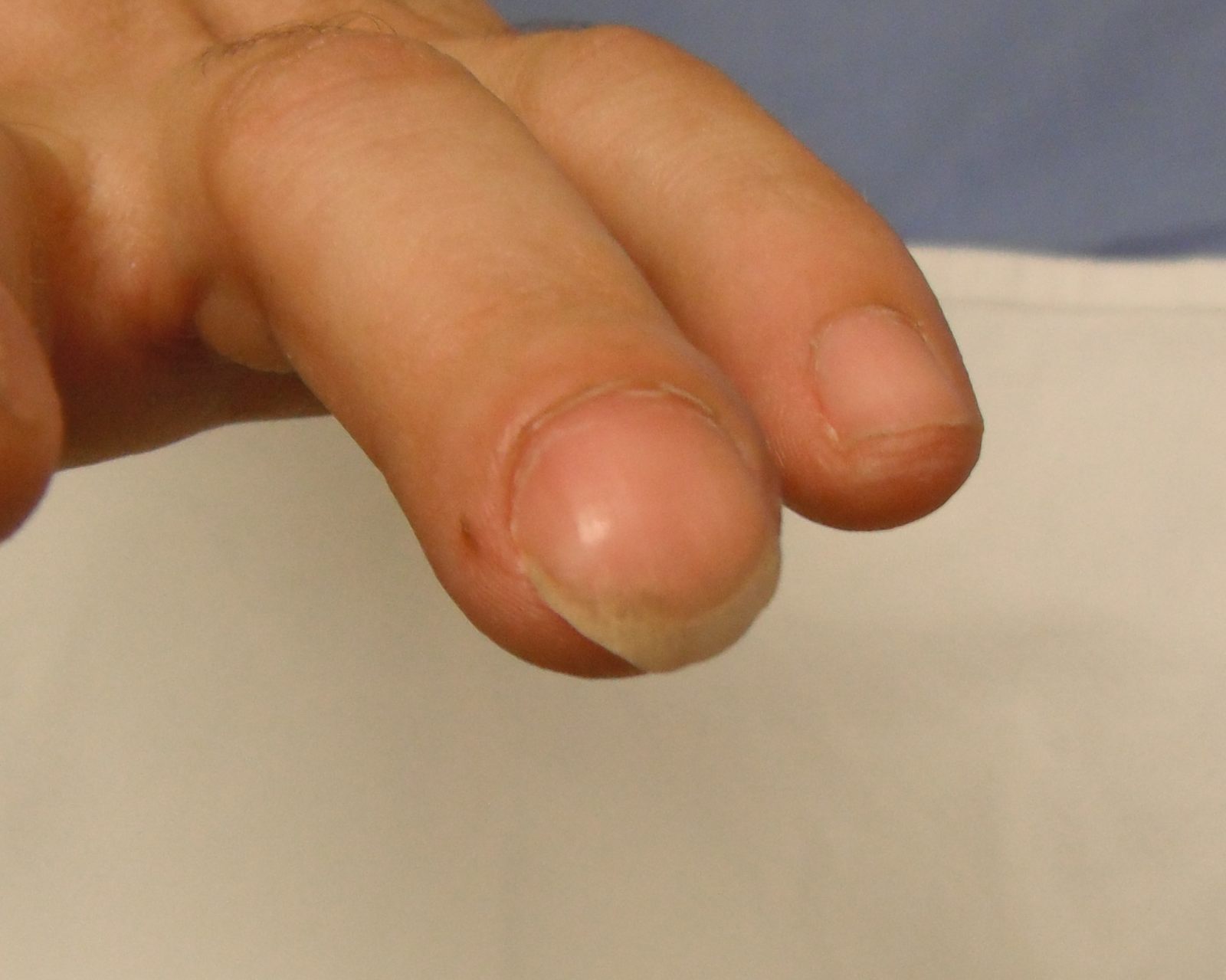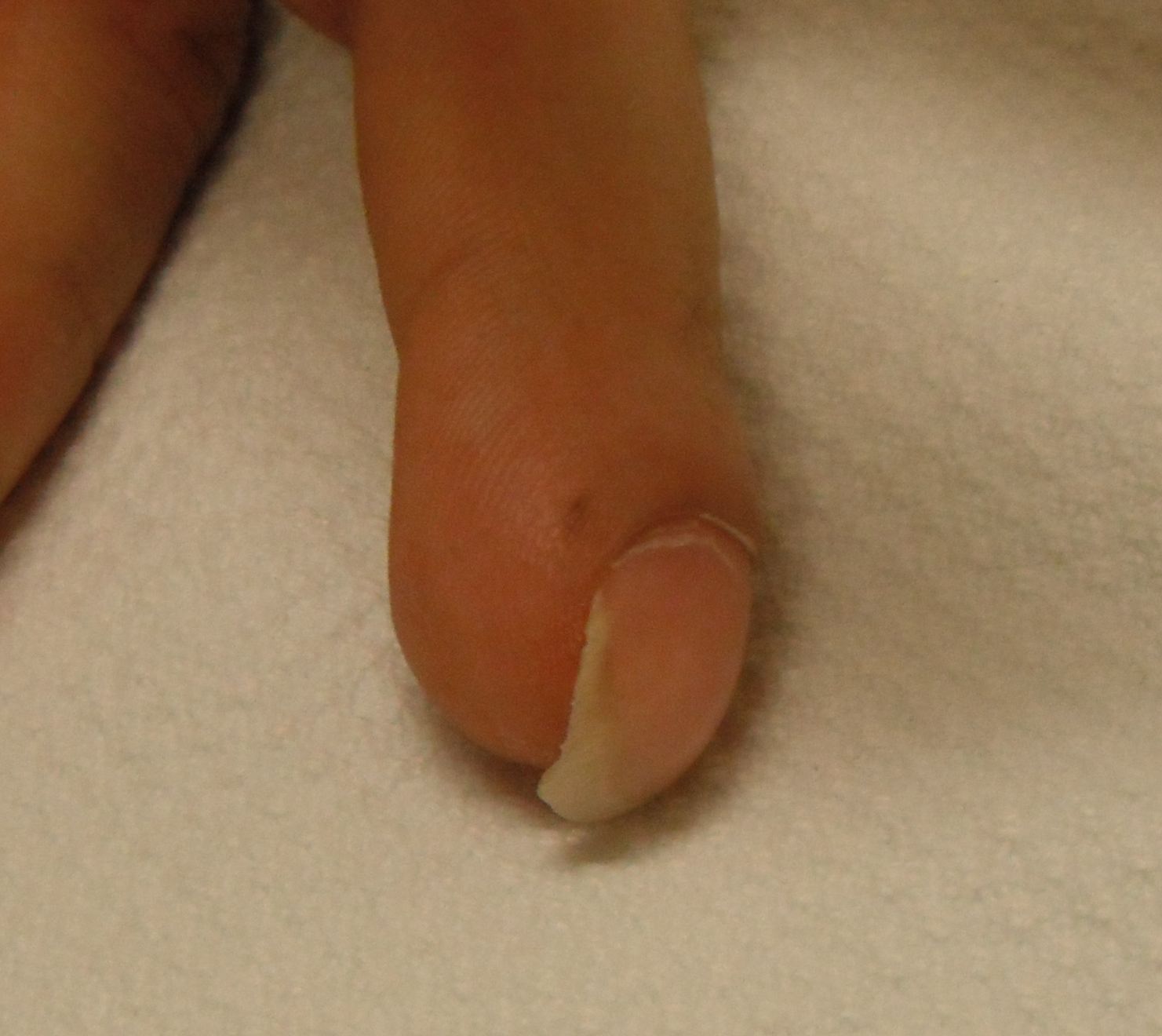Nail bed lacerations

Anatomy Nail complex
1. Nail Plate
2. Nail Bed
- adherent to thin periosteum of P3
A. Proximal germinal matrix
- proximal part
- limit is semilunar lunula
- produces 90% thickness of nail plate
B. Sterile matrix
- adherent to nail plate
- contributes little to thickness
3. Paronychium
- surrounding skin on dorsum of fingertip
4. Eponychium
- covers nail plate proximally
5. Hyponychium
- thick skin below distal edge of nail
Options
1. > 50% nail lost
- will get hook nail
- ablate nail bed
2. < 50 % nail lost
- repair bed under magnification
- 6.0 chromic cat gut
- reduce nail plate back into fold to prevent adherence of dorsal and ventral folds
3. Matrix defects
- can place nail bed material in place without sutures
- can use split thickness free nail bed graft
(i.e. from amputated digit)
4. Proximal avulsion of nail plate
- always have germinal matrix laceration
- should always have 3 x horizontal mattress sutures
Suture v Glue
Strauss et al J Hand Surg Am 2008
- RCT 40 patients
- compare Dermabond to repair with 6-0 chromic suture
- no difference in outcome
Dorsal soft tissue defects
Complications
Hook Nail


Subungual haematoma
Management
- < 50% of nail bed -> Decompress with needle
- > 50% -> remove nail and repair bed
